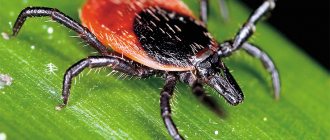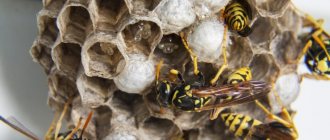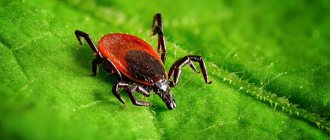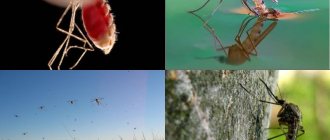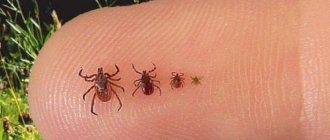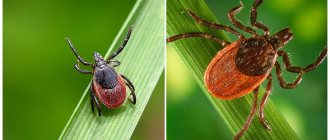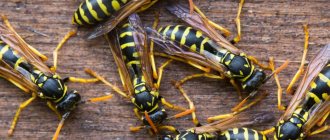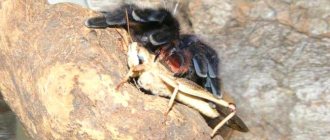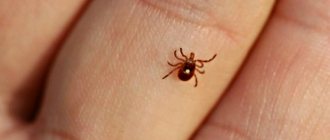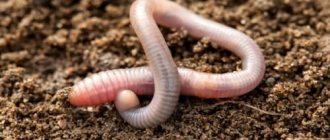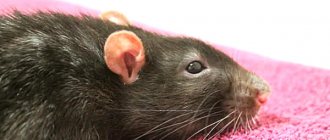Ticks appear in March and disappear at the end of October. Peak activity occurs in May-June, September-October. Favorable living conditions are temperatures within 20 degrees Celsius, high humidity, tall grass, thickets, and shrubs. The greatest danger to humans is ixodid ticks, which transmit borreliosis and tick-borne encephalitis. They are found in the wild, city parks, public gardens, and near houses. One of the most pressing questions is who eats ticks in nature.
Natural enemies
Ticks are at the very bottom of the food chain, so theoretically there are many people who want to eat them. But judging by how intensively pest control is carried out with chemicals, the number of natural enemies is clearly not enough to stop mass reproduction.
Birds
In Russia, ixodid ticks are widespread; the most dangerous areas are taiga forests. Pests feed on the blood of animals, birds, and people. But they themselves often become victims of birds.
Experts say that several species of birds eat ticks:
- thrush;
- chicken;
- quail;
- black grouse;
- guinea fowl;
- tick weaver;
- starling;
- sparrow;
- drag.
Enemies of ticks
The most active helpers for humans are the familiar sparrows. During the tick season, birds feast, but their appetites run out at a certain point.
Interesting!
Experts have put forward the theory that birds eat ticks mainly during the day, attracted by their blood, which is found in large quantities in the abdomen. From this theory it follows that hungry parasites have every chance to survive.
Insects
In the forest, blood-sucking pests are afraid of ants. They are repelled by the smell of formic acid, which actively emanates from a large anthill. In a fight between ants and mites, the first ones always win. When a victim is detected, the insects give a signal to their relatives, and a whole colony attacks one arachnid.
Ticks and ants never live in the same territory, but active insects always find a victim several tens of meters from the anthill. The most dangerous natural enemies are large red forest ants. When fighting with an arachnid, they inject poison, then drag it with them into their home. The ants eat the ticks themselves and feed them to their young.
Ticks and ants
On a note!
To destroy a colony of pests and prevent their reproduction, it is recommended to mow the grass, remove last year’s leaves and twigs, and clear bushes. The soil dries out, eggs and larvae do not develop, but ants do not live in such conditions.
Among insects there are other natural enemies of ticks in nature:
- dragonfly;
- bedbugs;
- ground beetle;
- riders.
Spiders eat blood-sucking parasites.
Amphibians
The life of a tick is at risk in the forest, on the banks of water bodies where amphibians live. Active destroyers include frogs, toads, lizards, newts, salamanders, and chameleons.
This is interesting: Class gastropods: description, types, features and photos of gastropods
Other natural enemies
Mites feed on insects, arachnids, and amphibians, but there are also enemies among plants. Tansy and chamomile repels and kills pests. The flowers secrete a toxin that has a nerve-paralytic effect. The plant does not destroy the colony of parasites, but repels them at a distance of up to several kilometers.
Ticks in nature feed on the blood of animals and birds and, on occasion, attack people. But they themselves often become victims of fungi. Spores multiply in a humid environment where eggs and larvae are located. It is fungi that stop the mass reproduction of parasites and prevent them from developing.
Interesting!
According to experts, ticks are useful because they are the basis of the food chain. They will disappear, many species of birds, insects, and animals will disappear. If we consider them from a human point of view, there is nothing useful.
Where do ticks live? How do they attack humans?
| Ticks live here |
Ticks are inhabitants of the forest. They live in the forest floor formed by fallen leaves and grass. The thicker the layer of litter, the better it warms up (but does not dry out), the more favorable the conditions for the development and life of ticks. They are found, as a rule, in small-leaved and deciduous-coniferous forests, in which birch, aspen, gray alder, bird cherry, rowan, willow, as well as pine and spruce grow. Such forests are sufficiently lighted, and the forest floor warms up well. In coniferous-deciduous forests with a significant predominance of spruce or pine and a relatively small content of deciduous trees, ticks are found in smaller numbers. They can be found in thickets of willow and gray alder located along forest roads, ditches, and fields.
A necessary condition for ticks to live in a particular forest is sufficient moisture in the soil and forest floor. Waterlogged or excessively dry forest areas are unfavorable for their habitat. Therefore, in swampy forests, there are no ticks on sphang mosses.
Relief plays an important role in the spread of ticks. In places where rocks are exposed or glacial sediment accumulates, they do not find conditions for development and existence. They are also not found in fields and meadows. Ticks live only in the forest litter, under favorable conditions of temperature and relative humidity necessary for their habitat and development.
In winter, ticks remain in the litter. Under snow, the temperature in the litter does not fall below 0°. Thanks to this, ticks have adapted to wintering in the climatic conditions of the north.
There is a popular belief that when attacking a person, ticks “jump” from bushes and trees. And few people think about the fact that it is quite difficult for such relatively small animals to climb to great heights. Living in the forest litter contributed to the development of a number of adaptations in ticks for attacking humans or animals.
Ticks are called lying in wait pasture parasites. They attack from grass, small bushes, and less often from the ground. According to our observations, in Karelia ticks do not rise above 50 cm. Most often, in early spring, they are located on plants near the surface of the ground. This is the basis for the method of catching them in nature using a flag or a drag. For this purpose, they use fabric (flannel, flannel, waffle) 1.1 m long and 0.45 m wide, mounted on a long stick either in the form of a flag, or in the form of a drag on a short stick with a rope. With their help, they envelop terrestrial plants and low bushes and then collect clinging ticks. Ticks are caught in this way for scientific purposes, but ticks can also be collected on the territory of the pioneer camp, summer cottage and around it with drag nets or a flag. All ticks that can be collected on the drag must be burned.
| Drag for collecting active ticks |
Early in spring, as soon as the snow melts, take an ordinary waffle towel, tie it to a stick with a string and wrap it around all the wild plants in and around your summer cottage, especially along paths and clearings. If there are clusters of young growths of gray alder, bird cherry or willow along the road to the site, it is better to mow them down. It is advisable to mow the grass around the dacha several times a season as it grows.
To prevent small mammals (wood mice, voles, shrews, etc.) - feeders of ticks in the early stages of development - from settling on your site, carefully remove food waste and avoid cluttering the area.
Pets (cats, dogs, etc.) that live in the country often visit adjacent areas of the forest and are attacked by ticks. They should be regularly inspected and all attached ticks should be removed, since those individuals that become engorged with blood and fall off in the forest will give birth to a new generation of ticks in a year.
Depending on weather conditions, all phases of the life cycle of ticks make daily and seasonal vertical migrations from the forest floor to herbaceous plants. Ticks hide from the bright sun and rain by descending into the forest floor, or, if they remain on plants, crawl to its shady part.
On plants, the mite is positioned in such a way that the front pair of limbs can freely stretch forward when a potential host approaches. This is the so-called waiting pose. Along with vertical pincers, small horizontal movements are also characteristic. Thus, according to the observations of Yu. S. Balashov, in the coniferous-deciduous taiga in southern Primorye, marked ticks moved for a month at a distance of up to 5 m from the place of their release.
In nature, ticks are distributed unevenly: there are always more of them where there are many birds and mammals. They concentrate along forest roads and animal trails, which serve as migration routes for animals. Knowing that ticks accumulate near forest roads and trails, in piles of dead wood, on fallen trees, take precautions. When walking through such areas of the forest, especially in the spring, when ticks are most aggressive after wintering, inspect yourself more often and remove clinging ticks, preventing them from being sucked on. However, we should not forget that ticks can be found in any small-leaved forests.
Let's start with prevention
Lyudmila Levkina Photo: AiF
When an animal has already become infected with some kind of infection from a tick, treatment is very difficult, requires large expenses and cannot go away without leaving a mark on its health. Therefore, before going outdoors, dog and cat owners should take all safety measures. Prevention is the best way to fight diseases.
— The tick season starts in March and ends in early October. Last year in Nizhny Novgorod, 958 animals fell ill with piroplasmosis, which is carried by ticks, says Lyudmila Levkina, deputy head of the State Veterinary Administration of Nizhny Novgorod.
Raitis Melnis Photo: AiF
Owners of dogs and cats need to be very attentive, inspect the animal after each walk with a comb and a hairdryer, said Raitis Melnis, veterinary specialist, graduate student at the Nizhny Novgorod Agricultural Academy . Most carefully check your pet's ears, neck, belly, and anal area - this is where ticks bite most often.
If you have a private house or garden plot, it makes sense to carry out anti-tick treatment of the area - this is important not only for the health of animals, but also for the safety of your children.
— If your pet is bitten by a tick, you need to carefully remove it. If the parasite was a carrier of a dangerous disease, in the coming days the animal will become lethargic, apathetic, and begin to refuse food. He may have blood in his urine, explains R. Melnis. — There are a lot of signs of the disease. My advice: if you remove a tick from your pet and the animal begins to behave differently than usual, consult a doctor immediately.
Treating piroplasmosis is difficult and takes a long time. Doctors use immunostimulants, liver protectants, vitamins - a large number of drugs to save the dog. The disease does not always go away without a trace for the animal, so it is better to take care of protecting your pet than to deal with the consequences of your own negligence, experts say.
Like raisins from compote
“We brought a horse from near Rzhev at the May festival,” says Pyotr Kamenchenko, deputy editor-in-chief of Lenta.ru, about his personal experience with ticks. — In the Staritsky district of the Tver region, I still have a house left by my grandfather. We bought a nice 11 month old foal. He raised his mane, and there was horror! Hundreds of sucked ticks look like raisins from yesterday’s compote! We called horse owners we know - they say it’s the same everywhere and no repellents help, just comb it out and pick it out with your hands... We decided to go to a neighboring village for a visit, dressed according to science: in everything light, tucked everything in, laced it up, sprayed ourselves with chemicals... We walked through an abandoned field , I looked, and the child had seven pieces running up his jeans, he shook them off. Thirty meters later - five more... I spent my entire childhood in these places and then - in the 1970s - 1980s - I only heard stories about ticks. And now something unreal is happening!
Having inserted its proboscis, the tick begins to inject saliva into the host’s body...
Photo: Research Institute of Disinfectology of Rospotrebnadzor
Here's another example. A friend of mine bought a Boerboel puppy and at the beginning of June took him to a dacha near Moscow, where he left him with his old mother until the next weekend. Run freely. And when he returned, the inner sides of the dog’s ears were covered with clusters of sucking mites, so that there was no free space left. The dog won't go to the dacha anymore. Personally, on weekends I walk with my dog in Moscow’s Serebryany Bor park. Despite the anti-tick collar and treating the dog with a special spray, after each walk I remove about five running ticks and a couple of attached ones.
What's happened? After all, fifteen years ago in Moscow and the surrounding regions, ixodid ticks, or, as they are more often called by people, encephalitis ticks, were exotic, and no one in the city had ever heard of their bites. And what is going on in the Kostroma, Yaroslavl, Vologda, Kirov, Perm, Sverdlovsk regions, the Komi-Permyak Autonomous Okrug, the Mari El Republic, the Udmurt Republic - historically abounding in ticks? Not to mention the Tomsk region - the absolute champion in the number of ticks and diseases transmitted by them? The answer is hell.
In the Tomsk region, even 20 years ago, ticks attacked people twice as often as anywhere else in Russia (a thousand people fell ill with Lyme disease in 1996), but this year the number of attacks has at least tripled. According to Rospotrebnadzor of the Tomsk Region, on May 4, 2016, 1,902 people came to seroprophylaxis centers with complaints of a tick bite. For comparison, on the same day—May 4, but a year earlier—only 610 people who had been bitten applied to the same medical institutions. And this is not a record. On May 20, 2016, 4,203 tick victims contacted Tomsk prevention centers. Can you imagine what happens to the dogs and horses there?
Damage from insects
The insect, after appearing on the plant, begins to feed on the sap and leads to the death of the crop. The pest is small in size and cannot be immediately noticed by humans. However, a tick infestation is manifested by the following symptoms:
- the appearance of small black or yellow dots on the back of the leaves;
- leaves become weak and yellow;
- the plant withers;
- cobwebs appear on leaves and stems.
Infected plants do not form flower stalks and practically do not produce young shoots. Such plants must be isolated and treated with chemicals.
To the bloodsucker's doom
Andrey Egorov Photo: AiF
Today, veterinary pharmacies offer a large list of protective products against ticks and fleas. According to Andrey Egorov, a representative of the manufacturing company and a veterinarian , dog breeders are offered special drops, collars, and tablets for pets.
— The products that are used on the dog’s skin have disadvantages. Firstly, the animal must have a good lipid layer on the surface of the skin, says A. Egorov. “But this layer may decrease if the animal is washed frequently. Secondly, the drop treatment calendar must be strictly observed. It is necessary to treat your pet against ticks monthly, without skipping the time of the next treatment, otherwise the effectiveness of protecting your pet will decrease or disappear altogether, says the expert.
Lately, veterinarians have often been offering tick and flea treat tablets for dogs. According to the manufacturers, the drugs are safe for animals, but destructive for ticks - the active substance is in the interstitial fluid, and wherever the parasite bites, it will “try” this remedy and die.
Remember: only a clinically healthy animal can be treated with any product. It is better to give tablets to a dog (there are no tablets for cats yet) with food. According to L. Levkina, today dog breeders use triple protection - a whole range of means. But the whole complex cannot be used at the same time!
— If you decide to use any other drug to treat dogs in addition to the tablet, choose products that can repel flying insects. The spectrum of protection will be expanded - there will be an impact on mosquitoes and other flying parasites, advises A. Egorov.
This is interesting: How does the bighorn sheep use its horns?
Traditional methods
In order to get rid of spider mites, you can use folk methods and homemade remedies. The most effective include:
- Soap solution and ash. 200 grams of ash must be dissolved in 5 liters of water and add a crushed bar of laundry soap. Stir thoroughly until the soap dissolves and spray the damaged plants. Repeat the procedure after 10 days.
- Garlic infusion. Pass 100 grams of garlic through a press and add a liter of water. Leave for 2 days, then strain and dilute in 5 liters of warm water. Spray the crop with the resulting solution. This method is also effective against aphids on eggplants.
- Onion peel. This method is suitable for all types of plants. To prepare, you need to pour 1 kg of husk with 5 liters of water and leave for several days. Strain the resulting solution and treat the beds.
- Alcohol. Most often, this method is used to control pests on indoor lemons. Alcohol and water must be mixed in equal proportions, and carefully wipe the damaged leaves. Repeat the procedure after 4 days.
DIY remedies give good results only at the beginning of the problem. If the mite appears in large numbers, you need to use ready-made preparations.
Question about the topic
The summer season has begun and ticks are becoming more active. Is it true that a person can be vaccinated against these dangerous parasites?
Galina Pushkina Photo: AiF
— In order to develop immunity to diseases transmitted by ticks, you need to be vaccinated according to a certain scheme. The first vaccination is given in the fall, then in the spring, and the third one a year later. Immunity after three-time vaccination lasts for three years,” said Galina Pushkina, director of the network of medical centers .
To maintain your immunity, you need to be vaccinated every three years throughout your life. If you have not been vaccinated before, then emergency vaccination can help you: the period between injections is reduced to two weeks. This measure is relevant in the spring. According to the doctor, there may be a local reaction (redness of the skin) to the vaccine. In 3% of cases, fever, general malaise, and drowsiness may occur (in children). This goes away after a few days. There are a number of contraindications for vaccination, so you should consult your doctor.
If the tick has already attached itself to you, you need to carefully unscrew it, put it in a glass container with a damp cloth and take it to the laboratory for examination.
Causes of spider mites
Mites can appear on all plants, including indoor ones. The first signs of a tick infestation may not be obvious and may only appear when there is a large concentration of the pest. The following factors may cause this problem:
- Introducing mites into new plants. Most often, this problem occurs in indoor plants when new flowers purchased from nurseries appear.
- Use of low-quality fertilizers. The larvae can accumulate in humus, which is used to fertilize plants.
- In the garden, insects can be carried by the wind because they are light in weight. In the same way, insects can be carried onto open balconies and loggias.
- Larvae can accumulate on garden tools, so it is necessary to promptly disinfect them.
The mite can also be introduced during sowing of seeds if the planting material is not disinfected in a timely manner.
Application of purchased acaricides
When using chemicals against ticks, you must adhere to the following recommendations:
Their use is strictly prohibited on the eve of honey collection or during the process. Neglecting this rule can result in dangerous toxins in the honey.
It is necessary to use only those drugs that are approved for treatments against varroa mites. Formic acid may only be used in the form of Illert tiles. Before using a chemical, you must carefully read the instructions.
The honeycombs that are in the hive at the time of processing cannot be used later, like honeycombs. They definitely need to be melted.
In the process of pumping out honey, you need to use a sieve to separate wax particles from the honey. The wax may contain pesticide residues.
Chemical-based products are used against ticks that kill them or severely damage them. Drugs can be fed to bees and affect the parasite through the blood.
In addition, they can evaporate in the hive and infect the pest through the respiratory system. Also, some drugs act through the contact of bees with them through the strips along which they move.
The following drugs are currently used:
Pericin for varroa mites
This chemical acts on the parasite through the bee's blood. It kills ticks that are on it. It is used in winter, when there is no brood. Usually 2 treatments are planned at intervals of a week, at temperatures close to zero.
A colony in a two-hull hive uses 30 ml of emulsion. Treatment is carried out with a spray bottle or syringe.
Apitol
This water-soluble drug easily penetrates honey, which requires careful use. The product powder should be dissolved in water and applied by spraying.
Formic acid on Illert tiles
The method is based on the evaporation of the product from the surface of the tile. Vapors of the drug penetrate into the hive with the air and affect mites through the respiratory system. Apply the chemical in the evening, with the taphole open, at a temperature of 12 to 20 degrees Celsius.
Such treatments can be planned 4 per season, with intervals between them of 15 days. For a single-hull hive, 1 tile is enough.
Bayvarol
The product is sold in the form of special strips, which should be hung along the inner perimeter of the hive. The product gets on the bees when they come into contact with the strips.
What should I do if bitten by a tick? First aid for a tick bite.
First of all, you need to remember that a bitten tick should not be crushed under any circumstances; it must be removed from the skin as quickly as possible, and completely. To do this, you can use one of the following methods:
- Generously lubricate the part of the tick's body sticking out with vegetable oil or wait 3-5 minutes. The fact is that the tick's respiratory organs are located in the back of its body, so while suffocating, it will try to get out.
- You can try to lubricate the tick with kerosene, after which after 10 minutes it will either unhook itself, or loosen its grip, after which it can be carefully pulled out with tweezers.
Now you know how to remove a tick.
It is extremely important to save the removed tick (you can put it in a plastic bag) in order to conduct laboratory tests and determine whether it was an encephalitis tick or not. Of course, both the severity of further consequences of a tick bite and future treatment depend on this.
After a tick bite, you should definitely consult a doctor.
Folk remedies for varroa mites
Along with chemicals, folk remedies are successfully used in the fight against varroa mites. The most popular herbal preparation is Varrabraulin. This environmentally friendly and safe product is used at the rate of 4 g per frame.
In addition, the following recipes are widely used:
Pine flour
The recipe is prepared and used as follows:
- take any needles;
- dry the material;
- grind the needles into powder;
- sprinkle the beehives with powder three times, at intervals of a week, at the rate of 50 g per family;
- After contact with the powder, the varroa mite will no longer be able to attach itself to the victim.
Dill oil for varroa mites
The recipe is prepared according to the following algorithm:
- take 2 cups of crushed dill seeds;
- mix the powder with 100 g of sunflower oil;
- the composition is heated in a water bath for 2 hours;
- leave the composition for 22 hours;
- squeeze out the composition and spread it on a piece of plastic film measuring 30 by 20 cm;
- the film with the smeared side is placed on the frame, and on top of it is placed the same piece of film with the smeared side facing up;
- after a week this procedure should be repeated.
Horseradish
Dried horseradish roots are placed in a smoker along with other flammable material. Then the hives affected by the mite are thoroughly treated with smoke.
Attention! Despite the fact that folk remedies are harmless to humans, it is still advisable to complete the last treatment with them 7 days before pumping out the honey.
Larva. Is the larva dangerous for humans?
What does a tick larva look like? Having hatched from the egg after 2-4 weeks, the larva is, in fact, an advanced copy of its parents. It does not exceed 0.5 mm in size and we can say that the larva looks like a small poppy seed. Also, as we wrote above, it has only three pairs of legs, and not four, like in adult ticks.
The body of the mite larva is not yet fully formed, there are no bristles yet, and in oribatid mites the body shell is still thin. Just like adult ticks, larvae hunt, only they choose small terrestrial animals as victims:
hedgehogs, mice, lizards (it is still difficult for them to rise to great heights).
As for the danger of tick larvae for humans, yes, the larvae are just as dangerous as adult ticks, because they can also carry the same encephalitis and other unpleasant diseases.
Signs of infection
During the first 2 years the disease develops unnoticed. Then a large number of mites appear (especially in the summer), which infect up to 30% of the bees. Bees and drones have characteristic disadvantages:
- absence or defective development of legs and wings;
- body deformation;
- The brood is variegated in color.
Other signs:
- Bee losses increase sharply, mainly in October-November. During this period, infection increases several times.
- In the autumn-winter period, bees become exhausted faster, as a result, colonies die or emerge from wintering very weakened.
- During wintering, bees behave very restlessly - they make noise and jump out.
- The bottom of the hives is covered with dead bees, on which brown mites can be seen.
- With a high degree of varroa infection, the death of bee colonies begins in the first half of wintering.
- After the main honey collection, upon returning from migration, heavily infected families leave their hives. Even a sufficient amount of food does not stop them.
Features of the lifestyle of ticks
Ticks are not active all year round. During periods of winter cold and summer heat, they plunge into a state of diapause, during which all their metabolic processes slow down. Parasites are most active in spring and late summer – early autumn.
They wake up around mid-April, remain active throughout May, disappear in June-July and become active again in August and September. Bloodsuckers enter hibernation in October-November, when temperatures reach sub-zero temperatures.
Much of the behavior of ixodids depends on the climate of a particular region. For example, in places where the summer is hot and dry, ticks will remain in diapause during the summer months, but where it is cold and wet, they will remain active.
This lifestyle of ticks suggests that they can either become victims of any animal that feeds on small arthropods and search for them among the grass, or be accidentally swallowed by herbivores along with plant food. It is also possible that the attached tick will be eaten directly from the host’s skin.
Ticks are a subclass of arthropods from the class of arachnids
Recognizing chigger bites
Chiggers prefer to bite vulnerable areas such as skin folds and areas around the base of hair follicles. The armpits and groin satisfy both of these requirements. When they bite, they inject saliva. Saliva contains enzymes that liquefy skin cells (yuck) and chiggers suck out the fluid.
When chiggers bite you, your body reacts by hardening cells against the bite, which creates a tube. The tube acts as the perfect straw to help the chigger as it continues to suck out the liquid skin. This is all pretty gross for most people, but other than irritating your skin and making it itchy, it won't hurt you.
Irritation that causes the body to resist and harden the area leads to itching, and itching does this. Chigger bites are known for being extremely itchy and causing red bumps. The impacts cover large areas around the ankles, groin, armpits and around the waist near the belt line.
In North America, chiggers are harmless except for itching. In Asia, on the other hand, chiggers can spread typhoid scrub.
Life cycle
Individuals in the nymph stage, as well as fertilized females, go to winter. Speaking of nymphs, these individuals continue to develop in winter. But the females wait for spring to lay eggs and continue the population. Regarding the laying of eggs, there are a huge number of them, not hundreds, but thousands of the new young generation. The life cycle of a bloodsucker depends on many factors, but on average it is 2 years. During this period, one individual can change 3 owners.
These parasites are dangerous already at the stage of larvae that emerge from eggs. For further development they need food. Most often, their victims are rodents, small animals and birds. They attack the victim, feed on blood and fall off. Then, in the warmed ground, they molt and move into the next nymph stage. If an individual enters the nymph stage in the summer, it looks for a new victim; when it is autumn, then at this stage the individual hides for the winter.
At the nymph stage, the individual also needs nutrition for further development. Both wild and domestic animals, rodents, birds can become victims of the nymph, and they can also attack people. When she is satisfied with blood, she herself falls away from the victim’s body. Once on the soil, it enters the adult stage. These are young individuals that, after being saturated with blood, become sexually mature and ready to reproduce. They continue their activity in the spring, when they lay eggs.
Danger and harm
Ixodid representatives of the species pose a great danger to both representatives of the animal world and people. The taiga tick, or, as it is also called, the encephalitis tick, is in first place in terms of danger, as it is a carrier of diseases such as borrelosis, encephalitis, ehrlichiosis and other diseases.
Due to the fact that the food of these arachnids is blood, infection occurs after a bite. The causative agents of fatal diseases enter the human body along with the saliva of arthropods. Other types of arachnids can also harm human health, for example, subcutaneous scabies mites, which can be carriers of diseases such as dermatitis and scabies.
Saprophages, which seem harmless at first glance, can also harm people. Due to their small size, there are no places inaccessible to them, so they live almost everywhere:
- flour - feeds on flour, cereals, grains and thereby destroys a large amount of food;
- arachnoid - destroys a garden or indoor plant;
- dust - eats particles of the epidermis, dust, and can also cause an allergic reaction and asthma in humans.
- ear - causes inconvenience to cats and dogs, moving into their ears.
Ticks, as it turns out, can be both beneficial and harmful to humans and nature as a whole. They occupy a certain ecological niche and fulfill their direct responsibilities.
Description and life cycle
The Varroa jacobsoni mite is an ectoparasite that lives on bees. It has a very flat body, resembling an inverted oval saucer with protruding lower limbs covered in hairs. The mite's four pairs of legs allow it to crawl and help it stay on the bee.
The body of the female is transversely oval in shape, brown or dark brown in color, measuring 1.6-2 mm. It can be seen with the naked eye. The mouthparts are of the piercing-sucking type and are usually hidden under the body. With its help, the female pierces the chitinous bee covers and feeds on the hemolymph of the blood of adult insects, larvae and pupae.
Among the specific morphological features of Varroa females, the following can be distinguished:
- the presence of a movable part of the peritremal tube, which allows you to regulate breathing in different living conditions;
- a unique body shape that ensures reliable fixation of the mite on the bee’s body;
- the presence of small teeth on the chelicerae directed backwards, which keep the females from falling out of the wound on the host’s body;
- a springy body covering that prevents insects from sticking during their life in bee brood.
The male is smaller and almost round (about 0.8 mm in diameter), visible only in bee brood. Its body has a grayish-white or light yellow tint. The pharynx lacks powerful muscles and is almost invisible. The oral apparatus serves only to transmit the seed during fertilization of the female. There are suction cups at the end of the legs.
The life cycle of the varroa mite consists of the following stages:
- The mother mite (adult female) gets from a worker bee or drone onto the honeycomb.
The tick climbs into the cell with the larva on the eve of its sealing. This often occurs in drone brood, but it can also occur in bee brood. After the cell is sealed (after three days), the female mite begins to lay eggs (an average of 1 egg per day, about 5 in total). The length of the egg is 0.5 mm. A larva develops in it, which turns into a nymph with four pairs of limbs. The nymph (protonymph) emerges from an egg measuring 0.7 mm. After a one-time molt, the next stage begins - the deutonymph. The dimensions of the female are 1.3 by 1 mm, the male is 0.7 mm in diameter. The chitinous shell is quite soft and whitish in color. They feed on hemolymph. While in the cell, the male fertilizes young females, after which he himself dies of starvation. Therefore, only female mites can be seen on adult bees. After the young bee has completed its development, it leaves the cell. Ticks move along with her, including an adult female. They climb onto bees (drones and worker bees) and remain on them until the next laying of eggs. Each female tick is capable of laying eggs several times. Young females have a chitinous shell of a lighter shade than adults. Only after a few days does it gradually darken.
The entire development cycle, starting with egg laying and ending with an adult tick, has a duration of:
- in the female – 8-11 days;
- for males – 8-9 days.
In summer, the female lives for 2-3 months, and in winter – about 5 months. In the winter season, due to the lack of brood, varroas stop reproducing and 7-10% of them die.
At the beginning of spring, with the appearance of brood and during the summer, the number of mites in a bee colony increases approximately 20 times. In autumn, when their number in the bee colony decreases, the pests move on to uninfected bees.
Varroa females remain viable outside the bee colony:
- in empty hives on honeycombs – 6-7 days;
- on bee/drone corpses – 3-5 days;
- on pupae – 7-11 days;
- in wax-beebread crumbs – 9 days;
- on honey plants flowers – 1.5-5 days;
- in sealed brood – 30 days;
- in open brood – 15 days.
Females can fast at a temperature of 22-25 °C for up to 5-6 days. At low external temperatures or the presence of harmful substances in the air, the tick stops breathing and hides in the cell of the honeycomb, thereby making it difficult to take measures to combat it.
As a rule, up to 5 mites are attached to one worker, 7-8 females are attached to drones, and 12 and 20 are attached to pupae of worker bees and drones, respectively. Location of parasites:
- between the first and second abdominal segments;
- between the thoracic segments;
- in the joints of the chest and head, chest and abdomen.
Unhindered reproduction of varroa leads to the death of the bee colony after 2-5 years. The more mites in the hive, the sooner the family dies.
Saliva – three in one
Over a long period of evolution, ticks have developed a number of mechanisms that allow them to firmly attach to their victims, anesthetize the bite site and block the body’s defense reactions. To solve these problems, tick saliva contains a large arsenal of specialized biomolecules.
First of all, we are talking about a unique product of the salivary glands of ixodid ticks, which allows them to remain literally “glued” to the skin of the victim for many days. This mite cement consists of a mixture of protein, carbohydrate and lipid molecules. Initially liquid, it quickly hardens, providing adhesion and preventing the victim's immune reaction. The detailed chemical processes occurring in the cement substance during hardening have not yet been established. Once fed, the mite dissolves the cement with the help of special enzymes and disappears.
The predatory mite
Phytoseiulus persimilis
, being a tropical species, does not have diapause in its life cycle and is active all year round. Spider mites are hunted not only by adults, but also by “teenage” nymphs. Ticks are highly voracious: under optimal conditions, one female can daily destroy up to 24 mobile individuals of a phytophagous pest or 30 of its eggs.
“Bio-glue” with the properties of mite cement, i.e. non-toxic, does not cause allergies and inflammation and, if necessary, soluble by gentle action, could solve many problems in medicine, primarily in surgery. After all, modern medical adhesives either contain toxic substances ( cyanoacrylate
), or do not provide strong adhesion (
fibrin glue
).
Such glue would be very useful for minimally invasive surgical interventions, since dressing through small incisions is difficult. The glue of the pliers is sufficiently viscous that it could be used to fasten bone fragments, including small ones that cannot be connected with screws. Another potential use for the adhesive is to securely attach intravenous catheters and cutaneous cannulas.
If the mechanisms of curing and dissolution of such glue can be established, it will be possible to create synthetic products with similar properties that can be modified depending on the application. This type of engineering has already been successfully used to create a particularly strong adhesive based on a substance with which mollusks are attached to the substrate.
When a tick bites a victim, in response to a violation of the skin, biochemical processes are launched in its body that prevent blood loss, as well as innate immune reactions, leading to inflammation at the site of the bite and healing of the wound. These protection mechanisms are very effective and are duplicated for reliability. However, mites have learned to block each of them with the help of hundreds of specific proteins in saliva injected into the wound.
All these proteins, which act very selectively on the most important processes in the body, are real treasures for pharmacists. Dozens of tick proteins have already been identified, which are of great interest as potential therapeutic drugs: anti-inflammatory, anticoagulants, immunomodulatory.
To feed themselves, ticks suppress the mechanisms of the hemostatic system using various salivary substances. The vasoconstrictor system is disarmed by arachidonic acid
and
prostaglandins
. These compounds activate enzymes that promote the production of substances that have a relaxing effect on the muscles.
Ticks use several different proteins to suppress platelet aggregation and blood clot formation. For example, apyrase
, which render powerful platelet activators such as ATP and ADP inactive.
Saliva also contains inhibitors of proteins that are part of the blood coagulation factor system
, as well as enzymes that promote the destruction of thrombin, a key participant in the blood coagulation process.
Simplified, the events at the site of a tick bite look like this. The first reaction of the body's hemostasis system is a spasm, a decrease in the lumen of the vessel to prevent blood loss. Then platelets stick together on the exposed collagen fibers of the vascular walls to form a clot that closes the lumen of the vessel. Around the clot, a strong structure is formed from fibers of the fibrin
, which is synthesized from the
fibrinogen
under the action of the enzyme
thrombin
.
In addition, thrombin is involved in other physiological processes such as inflammation. The platelets of the clot secrete protein factors that stimulate the repair of damaged tissue through cell proliferation. After the vessel walls are restored, the blood clot is dissolved by special enzymes, i.e. fibrinolysis
. Thus, from the saliva of Ixodes ricinus
the Ir-CPI protein was isolated, which specifically inhibits two blood coagulation factors (XIIa and XIa).
Experiments on animals have shown that this tick-borne protein can be used in complex heart operations involving the use of catheters and arteriovenous bypass. As is known, in these cases, when blood comes into contact with the polymer walls of the tubes, blood clots often form - the popular anticoagulant heparin
. However, this drug significantly increases the risk of dangerous bleeding, unlike Ir-CPI.
A number of tick salivary enzymes can directly break down fibrin clots (for example, metalloprotease
) and the fibrin precursor itself – fibrinogen (for example,
longstatin
Haemaphysalis longicornis
ticks ). In addition, with the help of their proteins, ticks can interfere with the regulation of the activity of the fibrinolysis process in the host’s body, forcing it to dissolve the blood clot using its own enzymes.
How does infection occur?
Infection of bees with the varroa mite leads to a severe invasive disease of bees, their pupae and larvae, called varroatosis. This disease is a real scourge of the beekeeping industry and causes enormous damage to it.
In summer, the spread of mites from infected bees to healthy ones occurs in the following way:
- wandering bees;
- thieving bees;
- when removing apiaries;
- during swarming of bees;
- when purchasing bees and queens;
- when introducing infected brood into families;
- when infected bees come into contact with healthy ones, during pollination of flowers;
- due to improper storage of drone brood.
Varroa can spread at a speed of 10 km per quarter, and this depends on the presence of apiaries in the vicinity. It has been noted that in regions with a hot climate, varroatosis spreads faster.
Important! We should not forget that bees suffer from not only varroa because of mites. These insects carry dangerous infections of paratyphoid, nosematosis and American foulbrood
In this case, the death of bees accelerates and becomes widespread.
Interesting Facts
- The smallest tick in the world, measuring only 0.08 mm in length, is even listed in the Guinness Book of Records.
- Three adult ticks, if placed together, will look like the dot at the end of a sentence in size.
- At birth, not a single tick is a carrier of dangerous infections; they only acquire them after parasitism.
- A female ixodid tick can eat 100 times more food than a male. After such a hearty meal, the female can increase in size by 150 times.
What does a gall mite look like, symptoms of damage
The gall mite, like many pests, feeds on plant sap. In nature there are several varieties of gall mite. In the country, the most dangerous are the plum gall mite and the gall spider mite. In addition to pears, the gall mite often affects the following crops:
- hawthorn;
- Apple tree;
- cotoneaster;
- Rowan;
- quince.
The body of the insect is very small, reaching only 0.3 mm in length. Under a magnifying glass you can clearly see that the gall mite is a bit like a pinkish worm. It is equipped with 4 legs that extend from the head of the body.
The spread of the insect occurs mainly due to the wind; in addition, it can be spread by animals, birds and people on their clothes.
Adult insects and older larvae go to winter. They take cover from frost and cold winds under the scales of vegetative buds. They stay there until the spring air reaches +10 degrees.
In April, the pest emerges from wintering and begins to intensively feed on the juice of young leaves and buds. Having fed, the females begin laying eggs. During the warm period, from 3 to 5 generations of ticks are born.
The pear gall mite exhibits its harmful activity throughout the entire growing season, and it is dangerous from the beginning to the end of the warm period of the year. The following negative processes occur from his activities:
- the growth of young branches is inhibited;
- the buds, as well as the buds and ovaries, are injured and dry out;
- the leaves are deformed and do not fully perform their photosynthetic function;
- fruits do not set at all or are formed defective;
- the overall shortfall in fruit yield can reach 80% or more.
Important! The mite leaves punctures on the leaves and through them the tree can become infected with a secondary infection. The juice released from the punctures attracts other garden pests. It is very difficult to see the gall mite without a magnifying glass due to its small size
Whether a tree is affected by a gall mite or not can be determined by its characteristic signs:
It is very difficult to see a gall mite without a magnifying glass due to its small size. Whether a tree is affected by a gall mite or not can be determined by its characteristic signs:
- among normal kidneys, enlarged “bloated” specimens are visible, lagging behind in development by a couple of weeks;
- on some leaves, there are light green plaques on the underside, reaching 2.5 mm in diameter;
- shoot growth is inhibited or they are already slowly dying off;
- plaques, starting to dry out, change color to brown, and then black;
- Over time, there are a lot of plaques on the leaf, it curls, dries out and falls to the ground.
Important! All varieties of gall mites are not dangerous to humans. It is not advisable to eat fruits from trees colonized by gall mites.
They are harder than healthy fruits and completely tasteless.
When building a system to combat this insect, one should take into account the fact that conventional insecticides against gall mites may not be effective. Special chemicals called acaricides must be used against it.
Nutrition
According to their diet, ticks are divided into:
Saprophage mites do not pose a threat; moreover, they also bring benefits, as they participate in the formation of humus.
Blood-sucking ticks are a completely different matter; these parasitic ticks wait for the victim, hiding in ambush on blades of grass and tree branches. Then they quietly jump onto her body, using paws equipped with special suction cups, attach themselves to the victim’s body and slowly drink blood from it. It is interesting that not only various large animals and humans, but also other herbivorous mites or thrips can become victims of ticks.
A tick bite is very dangerous, as they can be carriers of various diseases, especially encephalitis. Despite their unpretentiousness in food (as we wrote above, some ticks can go without it for up to three years), they can be incredibly voracious and can sometimes even increase in weight up to 120 times!
Also, in addition to blood-sucking ticks, there are ticks that feed on plant sap; these ticks sometimes cause great harm to agriculture. There are granary mites that eat flour and grain, ear mites that feed on juice from the ear canals, and subcutaneous mites that feed on the fat found in human hair follicles.
